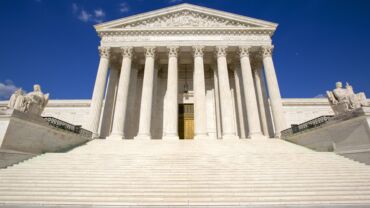IRS Notice 2020-50 (June 19, 2020)
Available at https://www.irs.gov/pub/irs-drop/n-20-50.pdf
The IRS has issued promised guidance regarding the retirement plan distribution and loan relief in the Coronavirus Aid, Relief, and Economic Security (CARES) Act. Under § 2202 of the CARES Act, qualified individuals affected by the COVID-19 pandemic may benefit from expanded distribution options, favorable tax treatment, and special recontribution rules for up to $100,000 of coronavirus-related distributions from eligible retirement plans (including 401(k) plans). The CARES Act also increases the amount qualified individuals may borrow, and permits delayed repayment of outstanding plan loans (see our Checkpoint article). In May, the IRS announced in FAQs (see our Checkpoint article) that it would issue guidance under § 2202 applying principles articulated in 2005 IRS guidance regarding distribution and loan relief for Hurricane Katrina—to the extent § 2202 is substantially similar to the Katrina relief legislation. The IRS has now issued its § 2202 guidance in the form of a notice that draws heavily on the Katrina guidance and elaborates on the FAQs. Here are highlights:
-
Qualified Individuals. The notice expands the list of events resulting from COVID-19 that can make someone a qualified individual. New events include reductions in pay or self-employment income, job offer rescissions, and delayed job start dates. Individuals may also be qualified individuals if they experience adverse financial consequences because their spouse, or a member of their household, experiences an event listed in the statute or notice due to COVID-19. For this purpose, an individual’s household includes anyone who shares the individual’s principal residence. The notice also clarifies that COVID-19 tests approved by the Centers for Disease Control include tests authorized under the Federal Food, Drug, and Cosmetic Act (the law that authorizes the FDA to require evidence of safety for new drugs).
-
Reliance on Certifications. The FAQs explained that administrators cannot rely on an individual’s certification when deciding whether a person is a qualified individual if the administrator has actual knowledge to the contrary. The notice clarifies that this “actual knowledge” requirement does not create an obligation to inquire into whether an individual satisfies the conditions necessary to be a qualified individual. Rather, an administrator will have actual knowledge to the contrary only when the administrator “already possesses sufficiently accurate information to determine the veracity of a certification.” The notice also provides an example of an acceptable certification.
-
Tax Treatment and Reporting of Distributions and Recontributions. The notice explains in greater detail how qualified individuals will obtain favorable tax treatment by reporting their coronavirus-related distributions on their federal income tax returns and on new IRS Form 8915-E (which is expected to be available before the end of 2020). The explanation closely resembles the one provided in the Katrina guidance, with updated examples and a clarification that the $100,000 limit on coronavirus-related distributions aggregates all of an individual’s eligible retirement plan distributions. The notice also stresses that an election to include the entire amount of a coronavirus-related distribution in income for 2020—instead of including the income ratably over a three-year period—cannot be changed after the timely filing (including extensions) of the individual’s 2020 income tax return.
-
Plan Loans. The notice provides an example of a literal application of the statutory relief allowing qualified individuals to delay loan payments coming due from March 27, 2020, through December 31, 2020. In lieu of that complex stacking of individually reamortized payments on top of regularly scheduled payments due after 2020, the notice offers an updated version of the safe harbor that appeared in the Katrina guidance. This safe harbor allows reamortized payments to begin after the suspension period and continue for up to one year after the loan was originally due to be repaid. The notice further recognizes that “there may be additional, reasonable, if more complex, ways to administer” the CARES Act’s loan repayment relief, and includes an example of one such method that restarts regularly scheduled payments after the suspension period, then reamortizes the entire loan beginning on the one-year anniversary of the suspension, for a period ending on a date up to one year longer than the original loan term.
EBIA Comment: The notice repeatedly affirms the position, taken in the FAQs, that employers may choose whether, and to what extent, their plans will provide the distributions and loan relief authorized by the CARES Act. Thus, employers have many options and will want to carefully choose not only which aspects of the relief they intend to offer, but how the chosen relief will be implemented. For more information, see EBIA’s 401(k) Plans manual at Sections XII (“Distributions: Code Requirements and Design Choices”) and XVI (“Distributions: Participant Loans”).
Contributing Editors: EBIA Staff.








